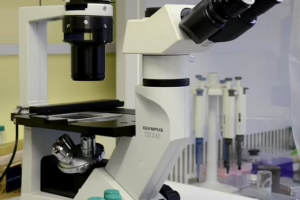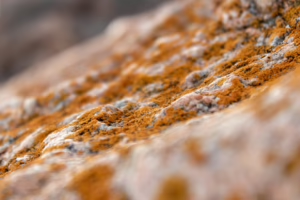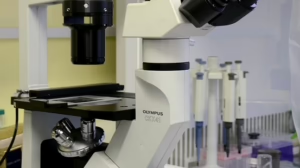Harnessing Nature: Biomimicry in Modern Science and Technology
Introduction
Biomimicry, a term that derives from the Greek words "bios" meaning life and "mimesis" meaning to imitate, represents an innovative approach to problem-solving by emulating nature’s time-tested patterns and strategies. This concept has transitioned from theoretical science into practical application, influencing numerous fields including architecture, engineering, and materials science. In an era characterized by environmental concerns and sustainability challenges, the principles of biomimicry offer revolutionary insights into creating sustainable technologies.
The Principles of Biomimicry
1. Nature as a Model
At its core, biomimicry involves studying the designs and processes found in nature and applying these lessons to human technologies. From the efficiency of spider silk to the aerodynamic shapes of bird wings, nature’s innovations have evolved over millions of years, showcasing optimal designs honed by natural selection.
2. Nature as a Mentor
Nature provides guidance on sustainability. Understanding natural ecosystems and their interconnectedness informs our approach to ecological issues, fostering solutions that mimic these natural relationships to promote sustainability in human interactions with the environment.
3. Nature as a Measure
Biomimicry suggests that nature can serve as a benchmark for innovative design. It encourages scientists and engineers to evaluate their inventions based on their impact on the environment, promoting the development of products that are not only functional but also synergistic with nature.
Historical Context of Biomimicry
While biomimicry as a formal discipline has gained traction in recent decades, instances of nature-inspired design can be traced throughout history. The creation of Velcro, inspired by burdock burrs, and the development of efficient ship hull designs based on shark skin, represent just two notable examples. The modern biomimicry movement gained momentum in the late 20th century, especially with the publication of Janine Benyus’s book "Biomimicry: Innovation Inspired by Nature," which has served as a cornerstone for the field.
Applications of Biomimicry in Modern Science and Technology
1. Architecture
Architectural design has increasingly utilized biomimicry to create energy-efficient and sustainable buildings. The Eden Project in the UK features geodesic structures that draw inspiration from natural ecosystems, optimizing energy, and managing water efficiently. Likewise, the East Gate Centre in Zimbabwe exemplifies biomimetic design by employing natural ventilation inspired by termite mounds, reducing the need for conventional air conditioning.
2. Materials Science
Biomimicry has led to the exploration of new materials that mimic the properties of natural substances. For example, researchers have synthesized materials that replicate the lightweight but incredibly strong structure of spider silk, with potential applications in medical sutures, bulletproof clothing, and flexible electronics. Similarly, scientists are developing self-cleaning surfaces inspired by the lotus leaf’s ability to repel dirt and water.
3. Robotics
Advancements in robotics often draw inspiration from the animal kingdom. Robots designed to mimic the locomotion of various animals have become more efficient and adaptable in navigating diverse terrains. For instance, the development of drones inspired by the flight patterns of birds has resulted in enhanced maneuverability and energy efficiency, leading to improved capabilities in surveillance, search and rescue missions, and environmental monitoring.
4. Energy Generation
Biomimicry has also played a pivotal role in the design of energy-generating technologies. Wind turbine designs that imitate the fins of humpback whales maximize efficiency and reduce noise, proving beneficial for both energy output and environmental concerns. Moreover, solar panels designed with textures inspired by the skin of certain species of fish enhance light absorption, improving energy conversion rates.
5. Medicine
Nature has long been a source of inspiration for medical advancements. The study of certain plants and animal behavior has led to breakthroughs in drug development and treatment methodologies. For example, the characteristics of shark cartilage have sparked research into its potential for cancer treatment. Additionally, bio-inspired wound dressings modeled after the structure of lotus leaves promote healing and reduce infection rates.
Challenges and Ethical Considerations
While biomimicry presents significant opportunities for innovation, it is not without its challenges and ethical considerations. The application of nature’s designs must be approached with care to avoid bio-piracy, where indigenous knowledge of natural systems is exploited without appropriate recognition or benefit-sharing. Furthermore, the process of emulating biological systems must be carried out responsibly, ensuring that the exploitation of natural resources does not harm the ecosystems being studied.
The Future of Biomimicry
As climate change and resource scarcity become increasingly pressing global issues, the relevance of biomimicry will only grow. The integration of natural principles into technological development may provide us with innovative solutions to some of our most complex challenges. The collaboration between biologists, engineers, and designers will be essential in advancing this multidisciplinary approach, fostering a deeper understanding of natural processes and promoting more sustainable practices across industries.
Education and Awareness
Investing in education and awareness around biomimicry is crucial for its future. By incorporating biomimetic principles into engineering and design curricula, the next generation of innovators will be better equipped to harness nature’s wisdom in their work. Furthermore, public understanding of the potential of biomimicry can drive demand for sustainable products and practices, encouraging companies and governments to adopt these principles.
Conclusion
Harnessing nature through biomimicry offers a pathway to innovative solutions that can address pressing environmental challenges while promoting sustainability and ecological balance. By closely studying the intricacies of natural systems, we can create technologies that not only mimic nature’s efficiencies but also respect and protect the ecosystems upon which we depend. Moving forward, the cross-pollination of ideas from biology, engineering, and design will be essential in realizing the full potential of biomimicry, paving the way for a more sustainable future.
Modern Footnote Source:
- Benyus, Janine. Biomimicry: Innovation Inspired by Nature. HarperCollins, 1997.
- Thwaites, Kevin. "Biomimetic Design: A Sustainable Approach to Architecture." Journal of Environmental Psychology, vol. 21, no. 3, 2001, pp. 139-148.
- "The Biomimicry Institute." www.biomimicry.org. Accessed 2023.
- Halsey, Andrea. "Shark Skin and the Future of Energy Efficient Technologies." Science Advances, vol. 25, no. 2, 2018, pp. 125-132.
- Levin, Richard. “How Nature Inspires Sustainable Innovation.” Nature Sustainability, vol. 3, no. 1, 2020, pp. 90-103.
This article is a condensed exploration of biomimicry’s principles, applications, and future. If you would like more specific details on any application or aspect of biomimicry, please let me know!


























Add Comment